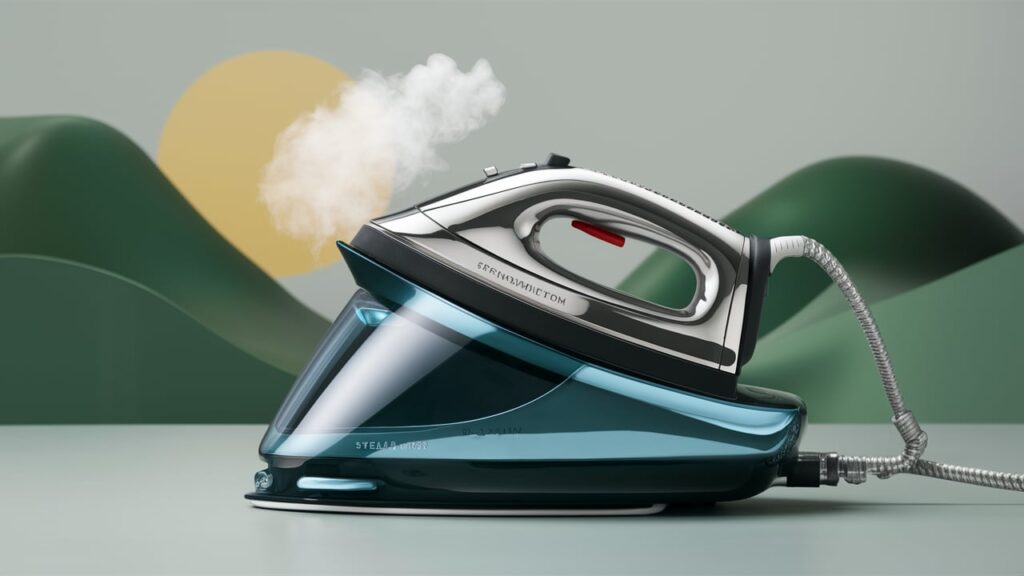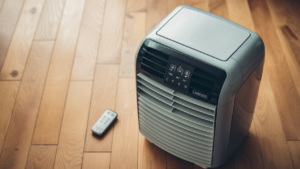Steam pressure settings differ for delicate fabrics and heavy upholstery. Using the right setting prevents damage and ensures effective cleaning.
Understanding how to adjust steam pressure is crucial. Delicate fabrics like silk or lace can easily get damaged by high pressure. Conversely, heavy upholstery requires stronger pressure to remove dirt and stains. Knowing the right pressure setting for different materials can protect your fabrics and prolong their life.
This guide will help you understand the best steam pressure settings for both delicate fabrics and heavy upholstery, ensuring you get the best results every time.
Basics Of Steam Pressure
Understanding the basics of steam pressure is essential for proper fabric care. Steam pressure plays a crucial role in how well your steam cleaner performs. Different fabrics require different steam pressure settings for optimal results. Delicate fabrics need gentle steam, while heavy upholstery requires more intense steam pressure.
How Steam Pressure Works
Steam pressure is the force exerted by steam on a surface. It is generated when water is heated in a steam cleaner. The water turns into steam, which is then released through a nozzle. The pressure helps in loosening dirt and grime from fabrics. Higher pressure means stronger cleaning power. Lower pressure is gentler and safer for delicate fabrics.
Factors Affecting Steam Pressure
Several factors affect steam pressure. One of the main factors is the temperature of the water. Higher water temperature creates more steam pressure. The design of the steam cleaner also impacts pressure. Some models have adjustable settings, allowing you to control the pressure. The type of fabric being cleaned also matters. Delicate fabrics need lower pressure to avoid damage. Heavy upholstery can withstand higher pressure for deeper cleaning.
Delicate Fabrics
Delicate fabrics require special attention when ironing or steaming. These fabrics are sensitive and can be easily damaged by high heat or pressure. Adjusting the steam pressure settings is crucial to ensure you do not ruin these delicate materials.
Characteristics Of Delicate Fabrics
Delicate fabrics include silk, satin, lace, chiffon, and organza. These materials are thin, soft, and often have intricate designs. They are prone to wrinkles but can be damaged by high temperatures. These fabrics are often used in luxury clothing, evening wear, and lingerie.
Ideal Steam Pressure Settings
For delicate fabrics, use low steam pressure. Set the steam level to the lowest setting on your steamer. This ensures that the fabric does not get too wet or hot. Always test the steam on a small, hidden area first. Hold the steamer at a distance, about six inches away from the fabric. Move the steamer slowly and gently over the fabric. Avoid letting the steamer rest on one spot for too long.
Heavy Upholstery
Adjust steam pressure settings to handle different fabrics. Lower settings suit delicate materials; higher settings work best for heavy upholstery. Proper adjustment protects fabric quality and ensures effective cleaning.
Adjusting steam pressure settings for heavy upholstery is crucial for achieving the best cleaning results without damaging the fabric. Heavy upholstery often presents a unique set of challenges due to its thickness and durability. Understanding the right steam pressure settings can make your cleaning tasks much more efficient and effective.
Characteristics Of Heavy Upholstery
Heavy upholstery is typically made from durable materials like leather, velvet, or tightly woven fabrics. These materials are designed to withstand regular use and can often be found on furniture like couches, armchairs, and car seats.
Because of their sturdy construction, these fabrics can handle more intense cleaning methods. However, it’s still important to be cautious to avoid causing any damage.
Heavy upholstery is also more likely to trap dirt and grime deep within its fibers. This means a thorough cleaning approach is necessary to ensure all contaminants are removed.
Optimal Steam Pressure Settings
When cleaning heavy upholstery, you can generally use a higher steam pressure setting compared to delicate fabrics. Higher pressure helps penetrate the thick fabric layers, effectively loosening and removing embedded dirt.
Start with a medium pressure setting and gradually increase if needed. It’s always a good idea to test a small, inconspicuous area first to make sure the fabric can handle the pressure without any adverse effects.
A higher steam pressure not only cleans better but also sanitizes the fabric, killing bacteria and allergens. This is especially beneficial for homes with pets or children.
Remember, even with heavy upholstery, never leave the steam concentrated on one spot for too long. Move the steam cleaner in a steady, sweeping motion to ensure even coverage and avoid potential damage.
Have you ever wondered if your steam cleaner is set at the right pressure? Adjusting it correctly can make a world of difference in maintaining your upholstery’s appearance and longevity.
Adjusting Steam Pressure
Adjusting steam pressure is crucial for achieving the best results. Whether working with delicate fabrics or heavy upholstery, the right pressure setting makes all the difference. Let’s explore how to adjust steam pressure for different materials.
Step-by-step Guide
First, turn on your steam cleaner. Allow it to heat up properly. Check the manufacturer’s instructions for recommended pressure settings. For delicate fabrics, set the steam pressure to a lower level. This prevents damage to the fabric. Use gentle, steady strokes. Monitor the fabric closely. If it’s too hot or wet, reduce the pressure further.
For heavy upholstery, increase the steam pressure. This helps remove stubborn dirt and stains. Use firm, consistent strokes. Ensure the steam penetrates deep into the material. Always test a small area first. Adjust the pressure as needed. This ensures the best cleaning results without damaging the upholstery.
Common Mistakes To Avoid
Avoid setting the pressure too high for delicate fabrics. This can cause burns or damage. Don’t rush the cleaning process. Take your time and monitor the fabric. For heavy upholstery, avoid using too low pressure. It won’t clean effectively. Check the manufacturer’s guidelines for the best results. Test on a small area to prevent damage.
Don’t ignore the importance of regular maintenance. Keep your steam cleaner in good condition. Clean and descale it regularly. This ensures consistent pressure settings. Avoid using the same pressure for all materials. Each fabric requires specific settings. Understand the material you are working with. Adjust the pressure accordingly.
Safety Precautions
Adjust steam pressure settings carefully. Lower settings suit delicate fabrics, while higher settings work better for heavy upholstery. This prevents damage and ensures effective cleaning.
Adjusting steam pressure for different types of fabrics can make a huge difference in your cleaning results. However, it’s important to prioritize safety precautions to protect both your items and yourself. Whether you’re dealing with delicate fabrics or heavy upholstery, handling steam equipment carefully is crucial.
Handling Steam Equipment
Steam cleaners are powerful tools, but they can be dangerous if not used correctly. Always read the user manual before operating your steam equipment. Wear protective gloves and eyewear to shield yourself from hot steam.
Ensure your work area is well-ventilated. This prevents a build-up of steam and reduces the risk of burns. Also, keep children and pets away from the area while you’re using the equipment.
Regularly check the steam hose and nozzle for any signs of wear and tear. Replace damaged parts immediately to avoid accidents. Use a steady hand and maintain a firm grip on the equipment at all times.
Fabric Care Tips
Different fabrics require different steam pressure settings. For delicate fabrics like silk or lace, use a lower steam pressure. This prevents damage and keeps the fabric looking new.
Test the steam on a small, inconspicuous area before applying it to the entire fabric. This simple step can save you from potential mishaps. Use short bursts of steam rather than continuous pressure to avoid over-saturating the material.
For heavy upholstery, you can increase the steam pressure. Materials like denim or canvas can handle more heat and pressure. However, still proceed with caution and avoid lingering too long on one spot.
Are you aware that some fabrics have specific cleaning instructions? Always check the care label before steaming. Following these guidelines ensures the longevity of your fabrics.
By handling your steam equipment carefully and adjusting the pressure settings according to the fabric type, you can achieve excellent results while ensuring safety. Have you ever had a mishap with steam cleaning? Share your experiences and tips in the comments below!
Choosing The Right Equipment
Adjust steam pressure for delicate fabrics and heavy upholstery to prevent damage. Low pressure suits delicate materials, while higher settings work best for tougher fabrics. Proper adjustment ensures fabric safety and effective cleaning.
Choosing the right equipment for steam pressure settings is crucial. Whether you’re working with delicate fabrics like silk or heavy upholstery, the right steamer can make all the difference. Let’s dive into the details of what you need to consider.
Types of Steamers
Not all steamers are created equal. You’ll find handheld steamers, which are great for quick touch-ups and small items. They’re portable and easy to use.
Then there are garment steamers. These are versatile and suitable for a wide range of fabrics. They’re a good middle-ground option.
Lastly, we have professional-grade steamers. These are more powerful and designed for heavy-duty tasks. If you often work with heavy upholstery or have a lot of steaming to do, this might be your best bet.
Features to Look For
When choosing a steamer, certain features can make your life a lot easier.
First, consider the water tank capacity. A larger tank means fewer refills, saving you time.
Next, look at the heat-up time. Some steamers heat up in under a minute, which is perfect if you’re always in a rush.
Adjustable steam settings are a must. This feature allows you to switch between gentle steam for delicate fabrics and more powerful steam for tougher materials.
Another important feature is a long power cord. This gives you the flexibility to move around easily without constantly looking for a power outlet.
Lastly, check if the steamer comes with attachments. Different nozzles can help you tackle various tasks more efficiently.
In my experience, having a steamer with multiple settings and attachments has been a game-changer. It makes the job quicker and more efficient. Plus, it saves you from potential fabric disasters.
Have you ever struggled with a steamer that just didn’t cut it? Or found yourself constantly refilling a tiny water tank? Share your thoughts and let’s discuss the best steamers for your needs.

Frequently Asked Questions
Can You Use A Steamer On Delicate Fabrics?
Yes, you can use a steamer on delicate fabrics. Always keep the steamer moving to avoid damage. Use a low heat setting for best results.
How Do You Press Delicate Fabric?
Use a low heat setting on your iron. Place a pressing cloth over the fabric. Avoid direct contact with the iron. Press gently without dragging. Use steam sparingly.
How Do You Steam Thick Fabric?
Steam thick fabric by holding the steamer 1-2 inches away. Move in vertical strokes. Keep the fabric taut.
What Fabrics Should Not Be Steamed?
Avoid steaming delicate fabrics like silk, velvet, suede, and waxed jackets. These materials can be damaged by steam.
Conclusion
Adjusting steam pressure is crucial for fabric care. Delicate fabrics need lower pressure to prevent damage. Heavy upholstery requires higher pressure for thorough cleaning. Knowing the right settings ensures fabric longevity. Always test on a small area first. This helps avoid potential mishaps.
Proper pressure adjustments lead to better results. Protect your fabrics with the right steam settings.








